Blueprint for Healing
Promoting skin and muscle growth by designing a blueprint for cellular regeneration is one of the core research projects in the Next Gen Tissue Engineering and Advancement Materials (TEAM) Lab.
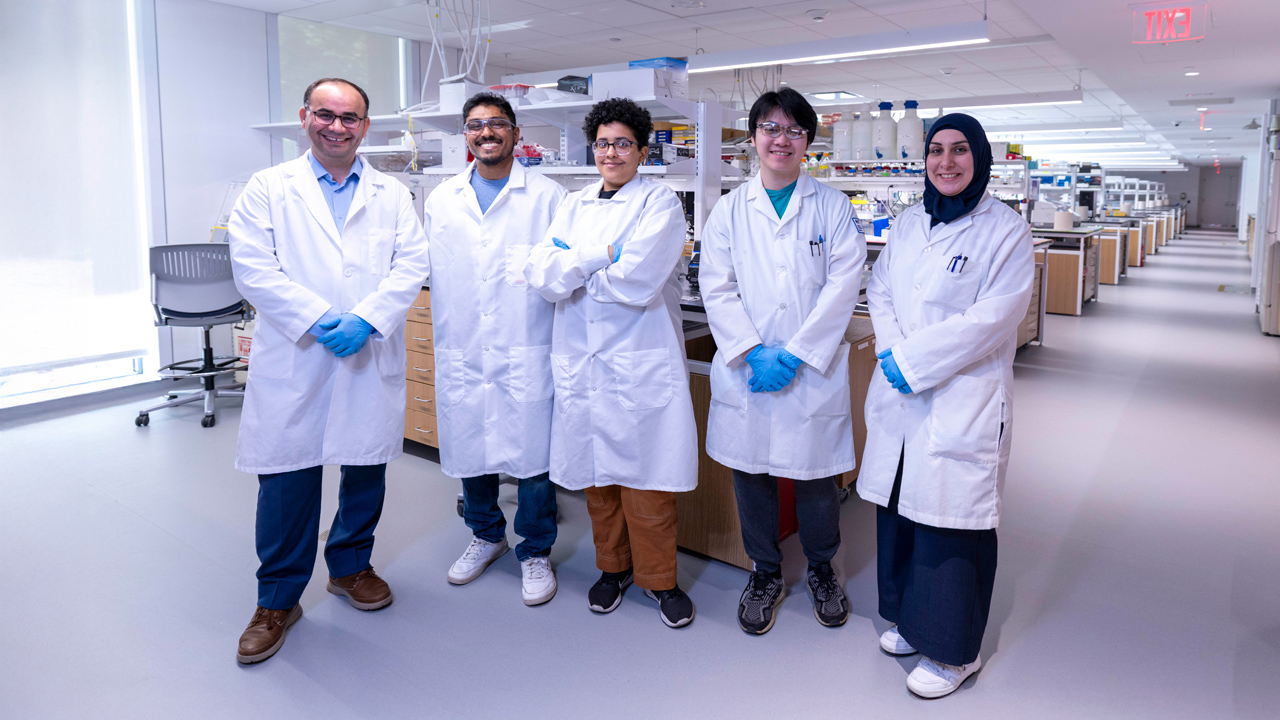
A multidisciplinary team of students is investigating solutions that would speed healing and positively impact the lives of countless people. The group is working under the guidance of Assistant Professor Karrer Alghazali, Ph.D., and Adjunct Assistant Professor Rabab Hamzah, Ph.D., who specializes in cell biology and nanoparticles.
The four students involved in the TEAM research include three students in the College of Engineering and Computing Sciences: Vic Valera, an undergraduate bioengineering major; Chris D’Costa, a graduate bioengineering major; and Jeffrey Chu, an undergraduate computer science major, who is just starting his college journey—as well as Matthew Duazo, a medical student in the College of Osteopathic Medicine.
The current project focuses on wound healing, specifically skeletal muscle regeneration and diabetic wound healing. The research is exploring the use of 3-D structures infused with various polymers and nanoparticles that facilitate tissue regeneration.
Alghazali, principal investigator and director of the TEAM Lab, firmly believes that all research should have real-world applications.
He applies this core belief to his research and his work with students. “I want to give our students the tools and skills needed to thrive and help them understand the benefits of collaboration and working toward meaningful contributions to better the lives of others.”
The Biomedical Research, Innovation, and Imaging Center (BRIIC), which houses the TEAM lab, is equipped for comprehensive investigations with advanced technical diagnostics that will enable a wide array of research questions to be explored.
Alghazali is incorporating the opportunities that the BRIIC offers into his research projects. “There’s an urgent need for research that translates into real-world health solutions, whether it’s developing medical devices that perform reliably across diverse patient populations, creating smart materials that respond to a body’s signals, or developing regenerative scaffolds for patients with traumatic injuries. Our work aims to close these gaps and improve outcomes where current technologies fall short.” Solutions, he believes, live at the intersection of innovative thinking and collaborative research.
Sharing Experiences Impacts Outcomes
The TEAM’s student researchers each has a specific role, but they benefit from sharing their experiences and ideas with one another.
Alghazali says that Duazo’s experience, combined with his medical training, ensures the research stays on track and remains aligned with clinical applications.
“The TEAM project has abundant practical applications from wound healing in diabetic patients to muscle regeneration for acute traumatic injuries,” Duazo says. “Diabetic patients often have decreased circulation and sensation. This can result in individuals not being aware of injuries and slower than normal wound healing. Both senecios increase the chance for infection, which can lead to more complex issues.”
Believing college is meant to expand horizons, Chu didn’t waste any time searching for opportunities on campus to apply and increase his computer knowledge. Speaking with individuals working in the Entrepreneurship and Technology Innovation Center, Chu learned that a bioengineering lab on the Long Island campus needed someone with computer-aided design experience.
Connecting with Alghazali, Chu discovered the team is designing and utilizing structures to act as a blueprint and scaffolding for cellular regeneration assisting individuals with muscle loss or conditions that delay skin healing. Chu, having experience building and printing basic computer-aided 3-D structures, was eager to join the project and gain design experience.
Interacting with the team, he learned more about the placement and purpose of the scaffolds that he would help create.
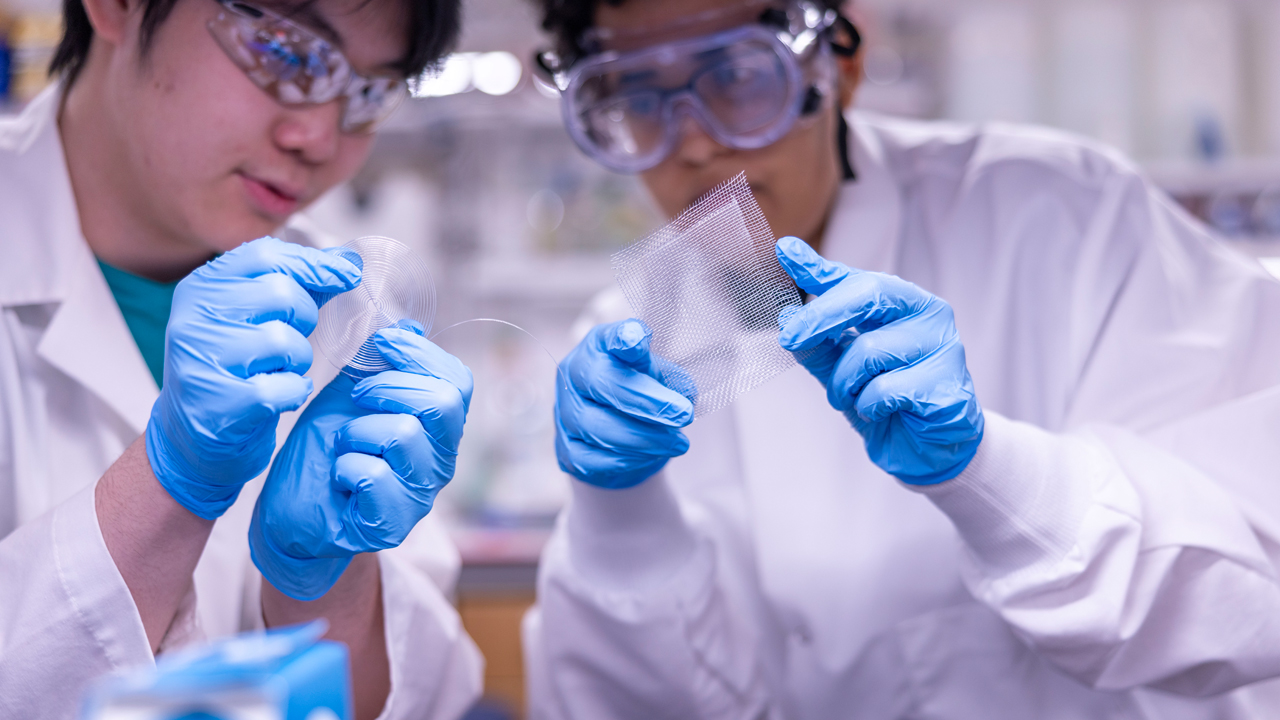
Designs Take Shape
Armed with the measurements, constraints, insights from the team, and the additional information gleaned from searching similar research, Chu designed several scaffolds to meet the initial project requirements.
D’Costa’s part of the project consists of creating and refining 3-D scaffolds made of synthetic biopolymers for volumetric muscle repair. With a mold Chu printed, D’Costa created a scaffold structure that he describes as a “squishy packing peanut.” This hydrogel scaffold is made of a synthetic biopolymer solution combined with salt. A process called salt leaching removes the salt, leaving pores in the matrix once the salt is dissolved. When the scaffold is dried, a static hydrogel matrix remains, he explains.
This porous, semi-rigid yet flexible scaffold is designed to promote cell infiltration and growth, while allowing nutrient and waste exchange within the scaffold.
The idea is for the scaffold to act as a blueprint and bridge, providing a framework and promoting cell regeneration, stimulating muscle cells to regrow and reconnect.
D’Costa embeds tiny fibers, or nanofibers, into the hydrogel matrix. “Nanofibers mimic the structure and properties of the extracellular matrix, which is the natural framework of tissues,” he notes.
This is where Hamzah’s expertise comes into play. She is helping the students understand what nanotechnology can bring to the table. Inserting nanofibers promotes cell-material interactions, such as cell attachment and tissue regeneration, and improves the strength and stability of the scaffold, she explains.
Valera is also exploring scaffolds, but with an emphasis on wound healing. Currently, Valera is experimenting with the properties, components, and design of scaffolds. Specifically working with Chu’s printed interconnected lattice scaffold, Valera says, “We are coating this flat ‘ultra bandage’ with nanofibers made from a biopolymer solution with added antioxidant nanoparticles using a process called electrospinning.”
Electrospinning creates nanofibers by applying a high voltage, forcing the liquid polymer through a syringe needle stretching it into thin fibers. These nanofibers are then spun to create the 3-D bandage. Similar to DCosta’s ‘squishy peanut,’ the electrospun bandage has the flexibility to conform to the correct shape while exhibiting significant tensile strength. Both D’Costa and Valera are exploring adding nanoparticles to their scaffold matrix. The addition of antioxidant nanoparticles, Hamzah says, decreases the chance of infection, reduces inflammation, and promotes faster healing. The research team is working to identify the ideal polymer, the superior technique for nanofibers creation, and the most helpful nanoparticles that come together in a scaffold to best promote tissue regeneration.
Unique Perspectives Elevate Research
“In collaborative teams, each individual brings their expertise and perspectives, elevating the research,” Alghazali notes.
With several years of experience in the biotech space in Boston, Duazo brings his industry expertise and clinical perspective to the team.
He came to New York Tech because of the vast research opportunities, which are now enhanced with the new state-of-the-art BRIIC. Unlike most future physicians, he doesn’t want a traditional role in a clinical or surgical setting. Duazo is interested in keeping a foot in the research world and sees himself working at the intersection of academic research, biomedical marketing, and clinical application. As he says, spanning “benchtop to bedside.”
Involvement with the TEAM Lab project is a step toward Duazo’s desired future. But he is also motivated by a personal connection. “Personally, there is a history of diabetes in my family, and clinically there is a need for advances in wound healing therapies,” Duazo says.
D’Costa, having spent years overseeing clinical studies also brings his industry experience to the team. As a senior quality assurance specialist for Estée Lauder, he ensures the research and end products comply with regulations. Through a company program that supports continuing education, D’Costa is pursuing his interest in tissue engineering while maintaining his position.
“The bioengineering program at New York Tech blends my biology and physics background. Dr. Alghazali’s projects are research and development focused and include entrepreneurial and business information that appeals to me and is practical for the workplace. I was attracted to the TEAM project because of its focus on regenerative medicine and my desire to have regenerative medicine and tissue engineering become central in my career,” D’Costa says.
Valera brings contagious enthusiasm, an innate multidisciplinary approach, and genuine love of exploring the intricacies of biology and engineering.
Moving to the Long Island campus after three years at the New York City campus, Valera is embracing the opportunity to be part of a research project with dedicated team members who have a wide scope of interests and expertise. “Now I’m excited to take all my experiences and knowledge from my time at New York Tech and apply it to opportunities beyond campus in the bioengineering industry.”
Problem-Solving Research
Bringing together and guiding students who combine insatiable curiosity with an enthusiastic belief and determination that they can be a catalyst for positive change in the world is what fuels Alghazali’s and Hamzah’s love of collaborative research and teaching.
D’Costa notes that his experience at New York Tech has been the toughest yet most rewarding experience of his life. “There is nothing better than seeing your hard work and ideas come to life in the real world.”
The TEAM group believes that diverse perspectives ignite imagination. Chu summarized the group’s sentiments, saying, “Going from an idea to a design and then a prototype helps you believe that your contributions matter.” When opportunities abound for students, like on the campuses of New York Tech, the result creates a blueprint not only for healing but for positively impacting the world.
By Denice Rackley
In collaborative teams, each individual brings their expertise and perspectives, elevating the research.
—Karrer Alghazali, Ph.D.
More News
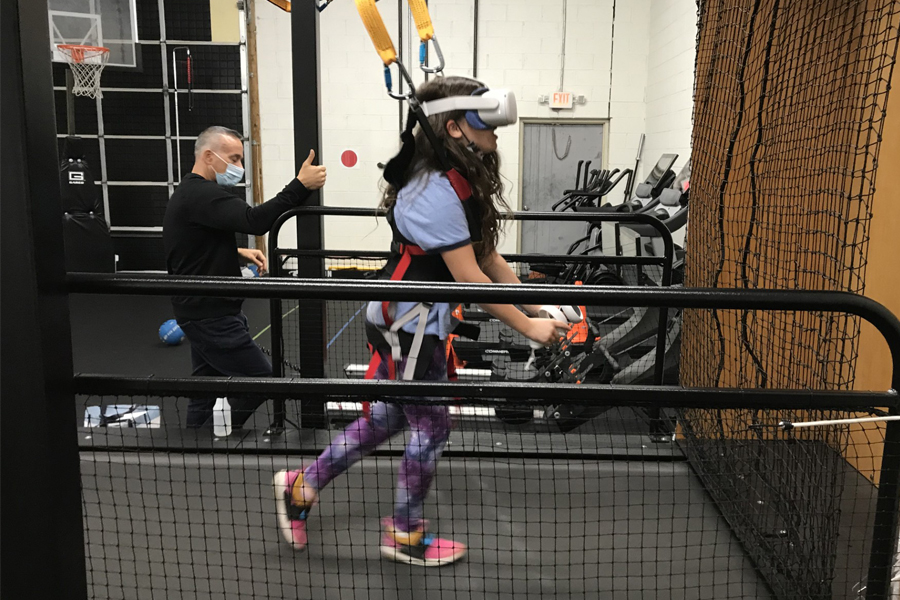
Study: VR Helps Children with Autism Participate in Exercise and Sports
A new study by researchers from the School of Health Professions and College of Osteopathic Medicine demonstrates how virtual reality (VR) can help children with autism spectrum disorder participate in exercise.
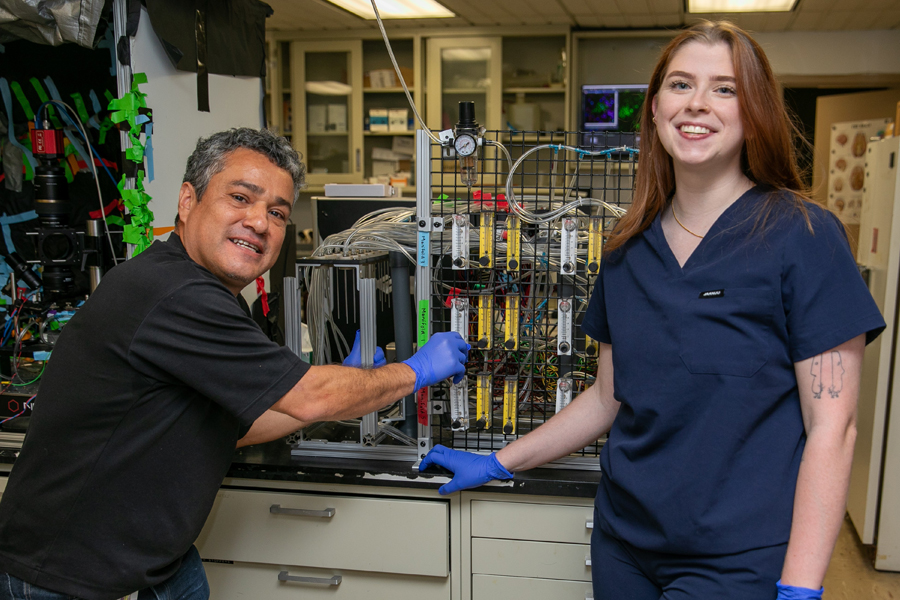
Driven by ‘Why’
Third-year medical student Kassandra Sturm leads the charge on a new study helping to uncover the neurological source affecting the sense of smell in autism spectrum disorder.
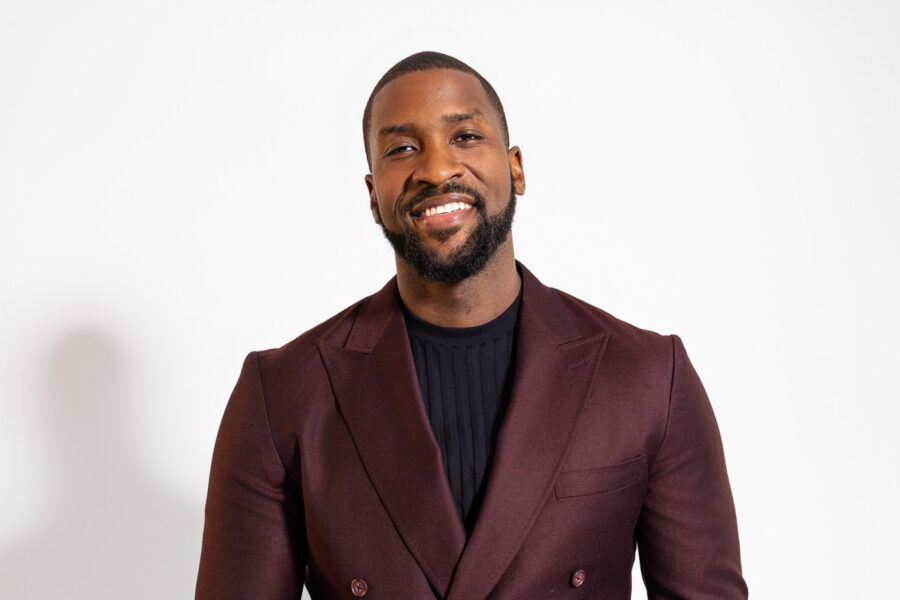
Technology Partnership Helps Children With Disfluencies
Former NBA star Michael Kidd-Gilchrist has partnered with the College of Engineering and Computing Sciences’ ETIC to develop a prototype of a technology platform that he hopes will help children who stutter.
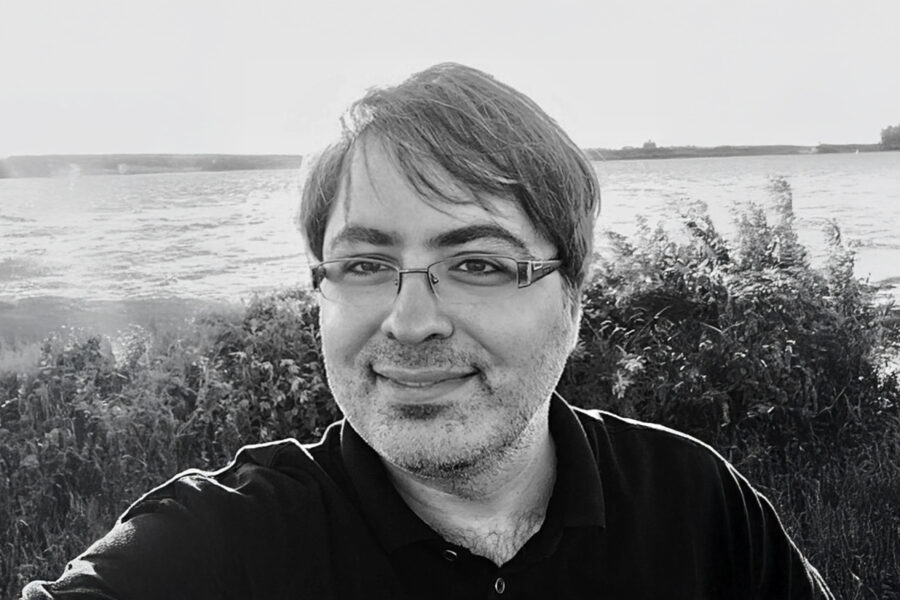
Engineering a Cancer Treatment Game Changer
A groundbreaking project co-led by the College of Engineering and Computing Sciences’ Steven Zanganeh, Ph.D., provides the world’s first functional, drug-testable, 3-D-printed human colon model.
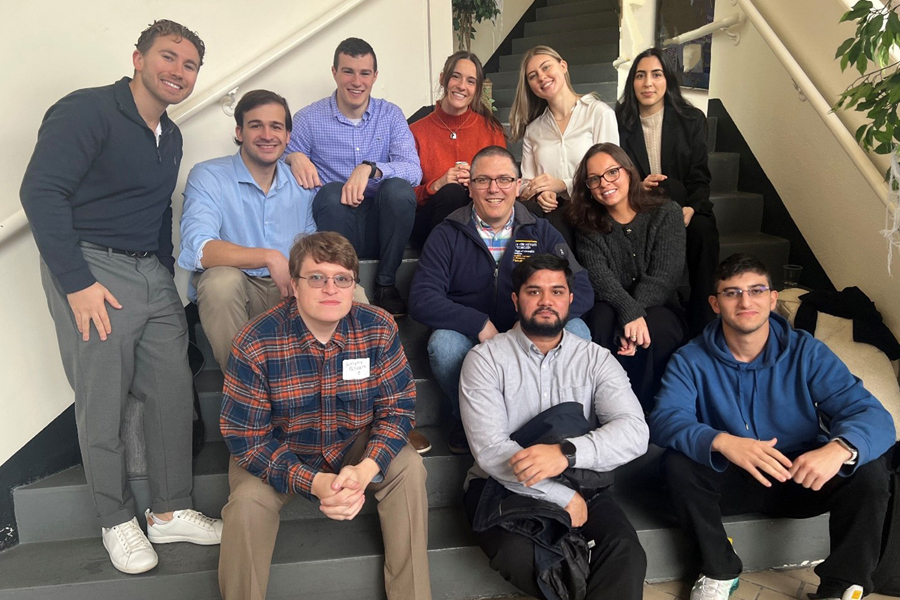
Gut Instincts: Solving Microscopic Mysteries
Research by NYITCOM Assistant Professor Vladimir Grubisic, M.D., Ph.D., aims to deliver findings that could pave the way for new treatments benefiting patients with gastrointestinal and neurological diseases.

Edward Guiliano Global Fellows: Culture Across Continents
Under the Edward Guiliano Global Fellowship program, seven students traveled the globe, broadening their perspectives and working on transformational research projects.